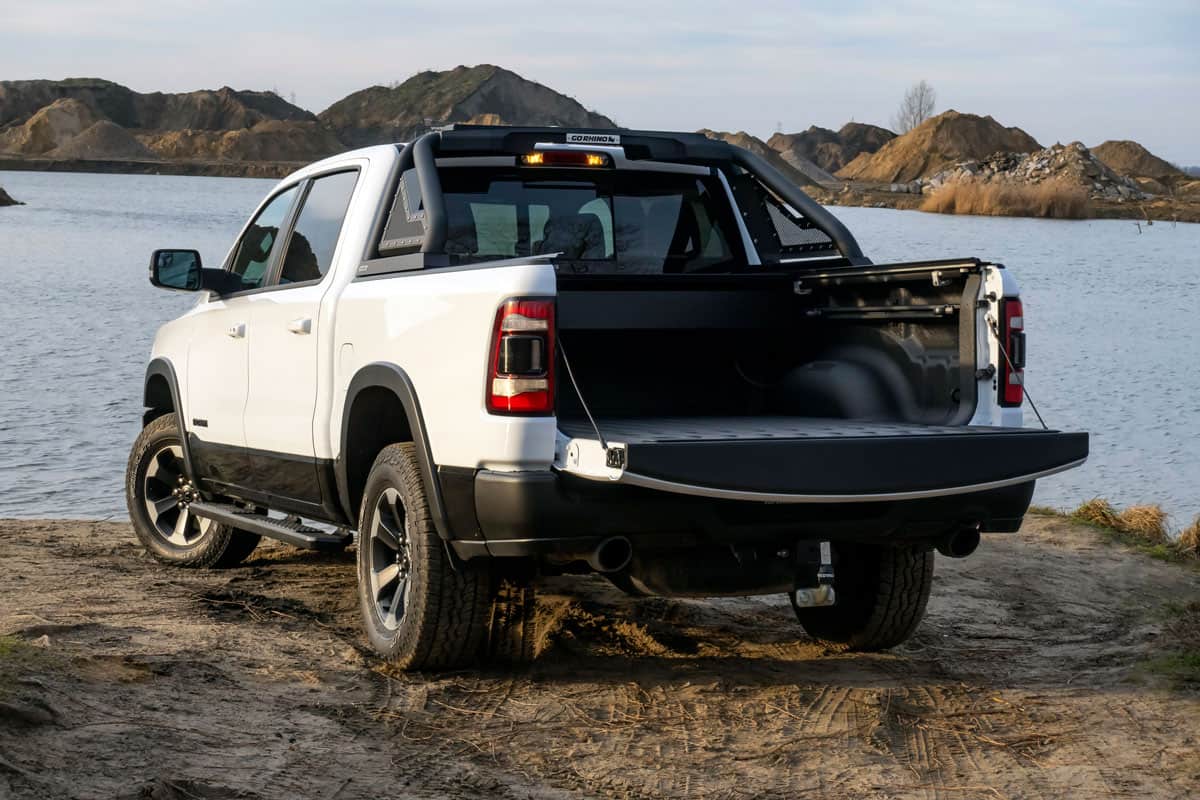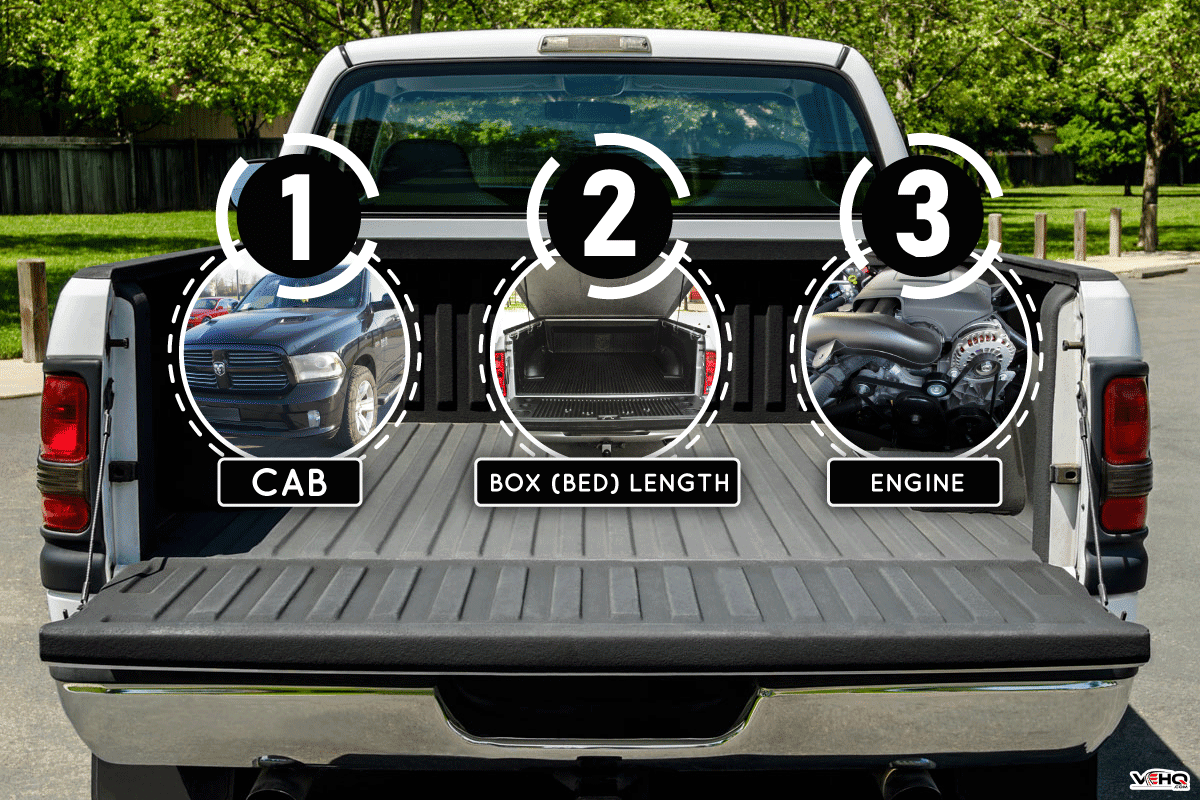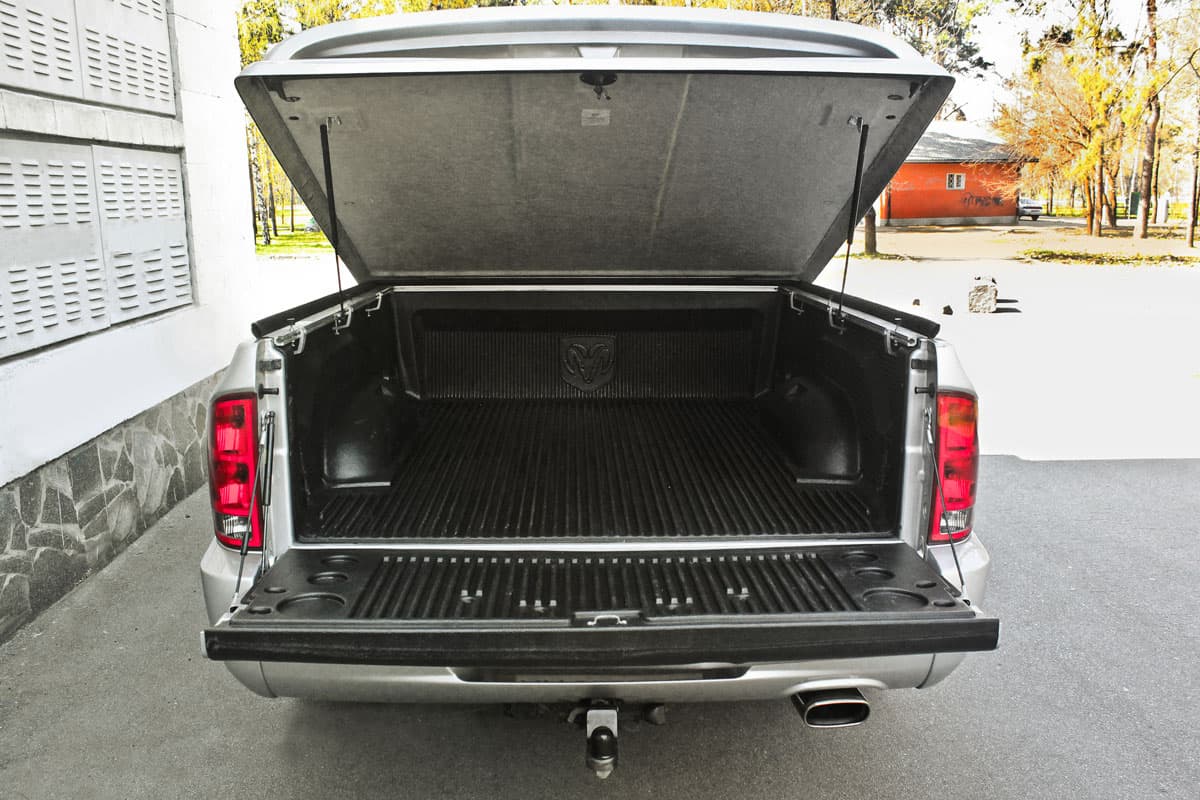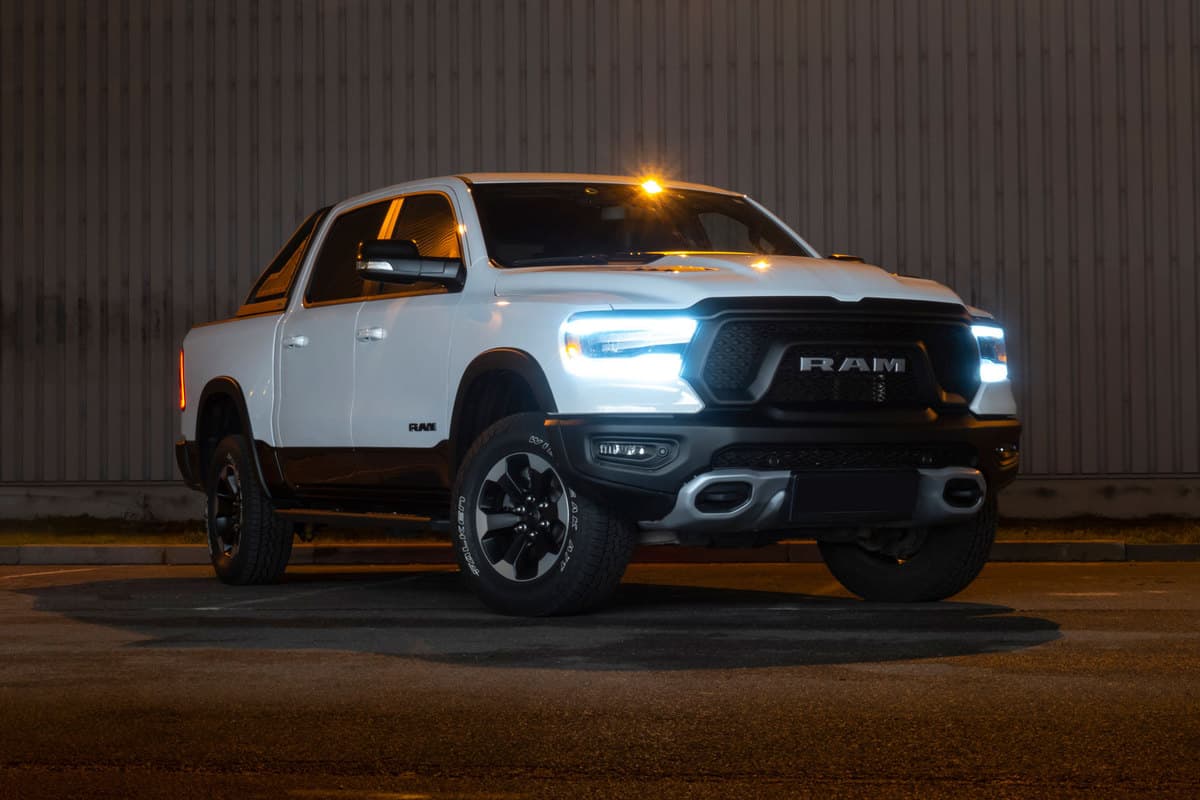If you're in the market for a new Ram 1500, one of your top considerations is likely the weight capacity of the truck bed. After all, the ability to carry a lot of weight in the bed is what makes pickup trucks such exceptional utility vehicles. So, just how much weight can a Ram 1500 hold in its bed? We did the research to bring you the answer.
The maximum payload capacity of the 2021 Ram 1500 ranges from 1,240 pounds to 2,320 pounds, depending on the vehicle's configuration. However, the maximum weight capacity of the bed itself is determined by the truck's maximum payload capacity minus all additional weight (passengers and internal cargo). So, theoretically, a Ram 1500 bed can hold approximately 990 pounds to 2,070 pounds in a real-world scenario.
If you still have some additional questions about how much weight a Ram 1500 truck bed can hold, you're in luck. In this post, we'll explore the topic in greater detail. We'll further discuss the factors that determine how much weight the truck bed can actually hold and much more. Without further ado, let's get into it!

Calculating A Truck Bed's Weight Capacity
Before we talk more about the 2021 Ram 1500's bed weight limitations, we need to discuss how to actually calculate this figure. Believe it or not, this specification isn't actually provided by the manufacturer. Maximum payload capacity is provided by Ram, but this figure doesn't necessarily equate to the amount of weight that can go in the bed, and we'll explain why.
Payload Capacity
Payload capacity refers to the weight that the vehicle can support in addition to the vehicle's empty weight. The empty weight/curb weight refers to how much the truck weighs with topped-off fluids and a full tank but with no passengers or cargo of any kind. In other words, its empty weight is how much a vehicle weighs when it comes off the assembly line.
So, if a truck has a maximum payload capacity of 1,500 pounds, this means that 1,500 additional pounds can be safely supported by the vehicle's chassis, frame, and suspension system, whether that weight is comprised of passengers or other cargo. While trucks are generally equipped with big, powerful engines that can pull a lot of weight, the truck itself has inherent structural limitations regarding the weight it can physically support.
Truck Bed Weight Capacity

Now that we've established a truck's payload capacity, we can discuss how this figure can tell us how much weight can be supported by the bed.
As mentioned, this figure isn't provided by Ram, so we'll have to do some math to figure it out. But first, let's think about it conceptually. In a real-life scenario, the truck will have at least one occupant (the driver) and possibly some type of cargo. So, these weights must be subtracted from the maximum payload capacity to determine how much weight can be allocated to the bed.
Let's say that a particular Ram 1500 configuration has a maximum payload capacity of 1,680 pounds. The driver weighs 200 pounds, the passenger weighs 160 pounds, and there is no cargo. These weights total 360 pounds. If we subtract this weight from the truck's maximum payload capacity, the result is the amount of weight that can be safely allocated to the bed. In this case, that would be 1,320 pounds.
Granted, there are certainly other physical limitations that come into play regarding things like weight distribution, but in the real world, it's safe to use the following equation to figure out how much weight the bed can hold:
Maximum bed weight = maximum payload capacity - total occupant weight - existing cargo weight (miscellaneous items inside the cabin or the bed)
Configuration Factors That Determine Truck Bed Capacity

Now that we have all of the technical concepts out of the way, we can talk about the specific configuration options that determine the payload capacity of a Ram 1500.
1. Cab

As cab size increases, payload capacity decreases. A smaller cab is lighter, which means that this decrease in weight can be allocated to the payload and, by extension, to the maximum bed weight.
For instance, all other factors being equal, the difference in maximum payload capacity between a Quad Cab Big Horn and the Crew Cab variant is 280 pounds.
2. Box (Bed) Length

As bed length increases, payload capacity generally increases. Though a longer bed is heavier, it still increases the maximum allowable cargo weight.
For instance, all other factors being equal, the difference in maximum payload capacity between a Ram 1500 Classic Regular Cab Tradesman with a 6' 4" bed and the same truck with an 8' bed is a whopping 400 pounds. Aside from this example, however, bed length has a negligible effect on payload capacity.
3. Engine

The effect engine size has on payload capacity varies depending on the configuration. In some cases, a smaller engine allows for a greater payload capacity, but in other cases, the opposite is true.
For instance, all other factors being equal, the difference in maximum payload capacity between a Ram 1500 Big Horn equipped with the 3.6-liter V6 engine and the same truck equipped with the 5.7-liter V8 engine is 170 pounds. In this example, the variant with the smaller engine has a higher payload capacity.
But on the other hand, the difference in payload capacity between two Ram 1500 Classic Tradesman variants with different engines is 100 pounds. In this example, the variant with the bigger engine has a higher payload capacity.
4. Drive
The effect of drive configuration (4x2 vs. 4x4) varies depending on engine size. In trucks with the 3.6-liter V6 engine, a 4x2 configuration boasts a greater payload capacity than those with a 4x4 configuration. In trucks with the 5.7-liter V8 engine, a 4x4 configuration has a slightly greater payload capacity than those with a 4x2 configuration.
Find A Configuration That Best Suits Your Needs
Ram's website allows you to compare models and their respective payload capacities side by side. Use this tool to find a configuration that works best for your particular payload needs.
What Happens If You Put Too Much Weight In Your Truck Bed?
We've established that there are limitations regarding the amount of weight that can go in a truck bed. But what happens if these limitations are exceeded?
First and foremost, putting too much weight in your truck bed will compromise the safety of everyone on the road. If you exceed payload limitations, your truck's handling characteristics will inevitably degrade.
From a mechanical/maintenance standpoint, exceeding these limitations will also cause undue stress on your truck's suspension components.
For these reasons, we recommend that you become well-versed in your particular truck's limitations and to ensure that they aren't exceeded.
Is It Bad To Leave A Heavy Load In Your Truck?
As long as the load in your truck doesn't exceed the limitations we've discussed, leaving the truck loaded won't pose a safety risk. However, there are some other things to consider, such as fuel economy and wear and tear.
If you leave a heavy load in your truck long-term, your fuel economy will significantly decrease. In other words, you'll be spending a lot more on fuel than you need to.
In terms of wear and tear, driving around with a heavy load in the truck bed will cause the suspension components to experience more wear and tear than they otherwise would. This will lead to more frequent (and thus more expensive) repairs.
How Do You Tell If Your Truck Is Overloaded?
We've all seen a pickup truck that is sagging in the rear so much that the fender wells are practically rubbing on the tires. Excessive sagging is an obvious indication that a truck is overloaded (or at the very least, that the weight isn't distributed properly).
It's normal for there to be some sag in the rear end when a pickup truck is carrying a heavy load. In fact, pickup trucks are generally slightly nose-low when empty; they are designed with a higher rear end to provide better support for loads. But if it looks like the rear end is sagging too much, it probably is.
Another way to determine if a pickup truck is overloaded is to simply do the math. If you suspect that your truck might be overloaded or nearing that point, crunch the numbers. Add up the cargo weight (the weight of the occupants plus any internal/external cargo). Then, subtract it from the vehicle's maximum allowable payload. This will give you a clear indication of how close you are to surpassing the vehicle's payload limits.
In Closing

We hope this guide has helped you better understand the Ram 1500's bed weight limitations. Be sure to follow the manufacturer's guidelines and limitations, and be safe! Before you go, be sure to check out these other guides that might be of interest:
What's The Ram 1500's Curb Weight? [Inc. Weight Table By Model]
How Much Can You Tow With A Ram 1500? [By Engine Type]
